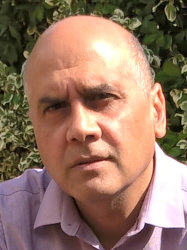BibTex format
@inproceedings{Raposo:2018:10.2514/6.2018-3379,
author = {Raposo, H and Mughal, MS and Ashworth, R},
doi = {10.2514/6.2018-3379},
publisher = {AIAA},
title = {Acoustic receptivity of compressible Tollmien-Schlichting waves with an efficient time-harmonic linearized Navier-Stokes method},
url = {http://dx.doi.org/10.2514/6.2018-3379},
year = {2018}
}

